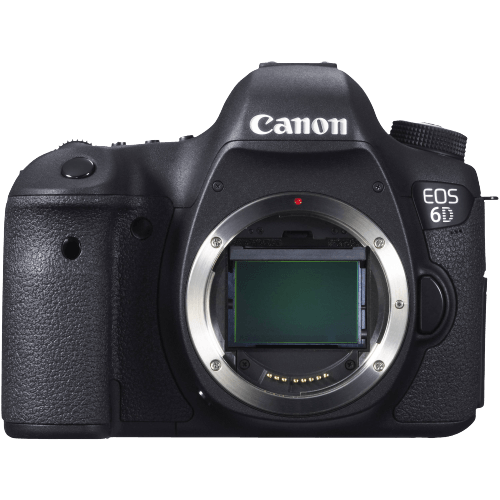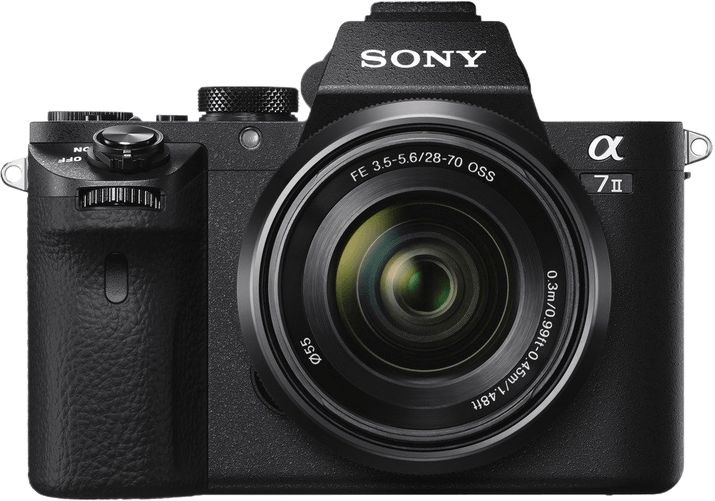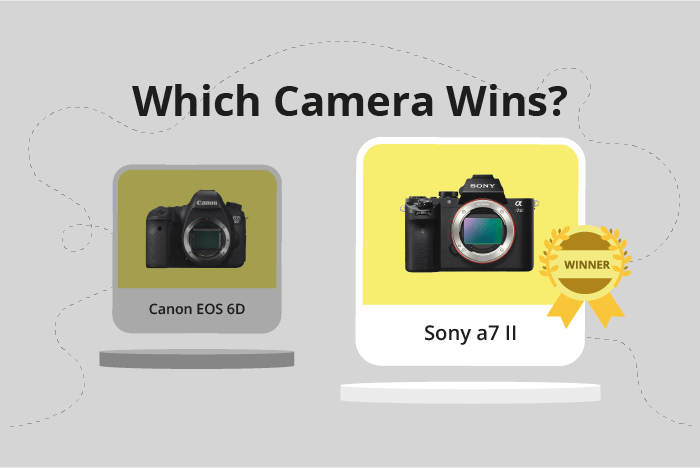Canon EOS 6D vs Sony a7 II Comparison
Canon EOS 6D

Sony a7 II

The Sony a7 II emerges as the winner with a score of 69/100, while the Canon EOS 6D scores 59/100. Both cameras were released in 2012 and 2014 respectively, with the Sony a7 II having a lower launch price of $1600 compared to the Canon EOS 6D’s $2099.
The Canon EOS 6D is a DSLR, and the Sony a7 II is a mirrorless camera. Both cameras share similarities in their dimensions, with the Canon EOS 6D being slightly larger and heavier (145 x 111 x 71mm, 770g) than the Sony a7 II (127 x 96 x 60mm, 599g).
The Sony a7 II outshines the Canon EOS 6D with its lighter weight and more compact size, making it more portable and convenient for on-the-go photography. Additionally, the Sony a7 II’s lower launch price makes it a more affordable option.
On the other hand, the Canon EOS 6D’s DSLR design may be preferred by some photographers who enjoy the traditional feel and handling of a DSLR camera.
Taking these factors into account, the Sony a7 II’s higher score reflects its better overall performance and value, while the Canon EOS 6D still offers a reliable option for DSLR enthusiasts.
Canon EOS 6D vs Sony a7 II Overview and Optics
The Sony a7 II outperforms the Canon EOS 6D in optics, with a score of 78/100 compared to the 6D’s 61/100. Both cameras share certain specifications, such as the CMOS sensor type, full-frame sensor size, and similar shooting speeds, with the a7 II having a slightly faster speed of 5 compared to the 6D’s 4.5.
The Sony a7 II excels with a higher megapixel count of 24.2, compared to the Canon EOS 6D’s 20.2. This results in better image quality and detail. Additionally, the a7 II has a superior processor, the Bionz X, which contributes to faster image processing and better overall performance. The a7 II also has a higher DXOMARK sensor score of 90, as opposed to the 6D’s 82, indicating a better sensor quality. A significant advantage of the Sony a7 II is its built-in image stabilization, a feature absent in the Canon EOS 6D.
The Canon EOS 6D, despite scoring lower in optics, has its merits. Its lens mount, the Canon EF, offers a wider selection of lenses compared to the Sony E mount. This allows for more versatility in choosing lenses to suit various photography needs.
Taking these factors into account, the Sony a7 II is the clear winner in terms of optics quality and performance. Its higher megapixel count, better processor, superior sensor score, and built-in image stabilization contribute to its higher score. However, the Canon EOS 6D holds an advantage in lens selection, which may be an important consideration for some photographers.
Canon EOS 6D vs Sony a7 II Video Performance
The Sony a7 II outperforms the Canon EOS 6D in video capabilities, scoring 56 out of 100, compared to the Canon EOS 6D’s score of 43. Both cameras have Full HD video resolution with maximum dimensions of 1920 x 1080 pixels. Additionally, neither camera includes built-in time-lapse functionality.
The higher video score of the Sony a7 II is primarily due to its faster maximum video frame rate of 60 frames per second (fps), compared to the Canon EOS 6D’s 30fps. This difference allows the Sony a7 II to capture smoother motion and better slow-motion footage. The faster frame rate also provides more flexibility in post-production, as users can slow down footage without losing quality.
On the other hand, the Canon EOS 6D does not offer any significant advantages over the Sony a7 II in terms of video capabilities. Both cameras share the same video resolution and lack time-lapse functionality.
Taking these points into consideration, the Sony a7 II is the clear winner in terms of video capabilities. Its faster frame rate provides a noticeable improvement in video quality, offering users more versatility and creative options. While the Canon EOS 6D is not a bad choice for video, it falls short when compared to the Sony a7 II.
Canon EOS 6D vs Sony a7 II Features and Benefits
The Canon EOS 6D and the Sony a7 II both have a feature score of 57 out of 100, resulting in a tie. Both cameras share some common specifications, such as a 3-inch screen size, the absence of a touchscreen, and the lack of Bluetooth connectivity. Moreover, both cameras offer Wi-Fi connectivity, which is helpful when transferring files or remotely controlling the camera.
The Canon EOS 6D stands out with its built-in GPS feature, which is not available in the Sony a7 II. This allows users to geotag their photos, making it easier to organize and locate images based on the location they were taken. This feature can be particularly useful for travel photographers or those who frequently shoot in various locations.
On the other hand, the Sony a7 II has a higher screen resolution of 1,230,000 dots compared to the Canon EOS 6D’s 1,040,000 dots. This results in a sharper and clearer display, which can improve the overall user experience when reviewing images or navigating through menus. Additionally, the Sony a7 II boasts a flip screen, offering more flexibility when composing shots from different angles, while the Canon EOS 6D does not have this feature.
In comparing the Canon EOS 6D and Sony a7 II, both cameras have their own advantages. The Canon EOS 6D’s GPS functionality is beneficial for those who need location data, while the Sony a7 II’s higher screen resolution and flip screen offer a better user experience and versatility in composing shots. Ultimately, the choice between these cameras depends on the specific needs and preferences of the photographer.
Canon EOS 6D vs Sony a7 II Storage and Battery
The Canon EOS 6D outperforms the Sony a7 II in storage and battery, scoring 45/100 compared to 35/100. Both cameras have one memory card slot and accept SD, SDHC, and SDXC cards. However, the Sony a7 II also supports Memory Stick Duo, Pro Duo, and Pro-HG Duo cards, offering additional storage options.
The Canon EOS 6D’s battery life is significantly better, providing 1090 shots per charge, while the Sony a7 II only lasts for 350 shots. Both cameras use different battery types, with the Canon using an LP-E6 and the Sony using an NP-FW50.
Despite the Sony a7 II’s additional memory card compatibility, the Canon EOS 6D’s superior battery life makes it a better choice for extended shooting sessions. The Sony a7 II may be suitable for users who prioritize storage flexibility, but its shorter battery life limits its practicality in comparison to the Canon EOS 6D.
Canon EOS 6D vs Sony a7 II – Our Verdict
Are you still undecided about which camera is right for you? Have a look at these popular comparisons that feature the Canon EOS 6D or the Sony a7 II:

